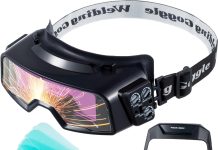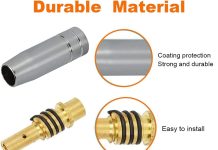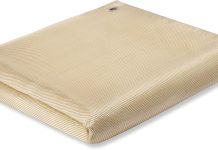You’re ready to take your welding projects to the next level, and that’s where Thermal Arc Welders come in. These versatile machines are specifically designed for heavy-duty welding, making them the ideal choice for professionals and enthusiasts alike. Whether you’re working on construction, fabrication, or repairs, Thermal Arc Welders offer the power, precision, and durability you need to get the job done right. With their advanced technology and user-friendly features, these welders are built to withstand even the toughest welding tasks. Get ready to transform your welding experience with Thermal Arc Welders.
Review contents
Overview of Thermal Arc Welders
Definition of Thermal Arc Welders
Thermal Arc Welders are versatile and powerful welding machines used for heavy-duty welding applications. They utilize an electrical arc to create a high-temperature plasma that melts and fuses metals together, creating strong and durable welds. These machines are specifically designed to provide precise control and exceptional performance in various welding processes.
Advantages of Thermal Arc Welders
Thermal Arc Welders offer numerous advantages that make them a preferred choice for professionals in the welding industry. One of the key advantages is their versatility. These welders are capable of handling a wide range of welding processes, including stick welding, TIG welding, and MIG welding, allowing welders to tackle different projects with ease.
Another advantage is their exceptional power source. Thermal Arc Welders are equipped with advanced power sources that deliver stable and consistent power output, ensuring reliable and high-quality welds. This feature makes them suitable for welding various metals, including steel, aluminum, and stainless steel.
Additionally, Thermal Arc Welders have a high duty cycle, which refers to the amount of time the machine can operate continuously without overheating. This allows welders to work on lengthy welding projects without interruptions, improving productivity and efficiency.
Applications of Thermal Arc Welders
The versatility and power of Thermal Arc Welders make them suitable for a wide range of applications. These machines are commonly used in industries such as construction, manufacturing, automotive, and maintenance. They can be used for welding structural components, fabricating metal structures, repairing machinery, and even creating art and sculptures. With their ability to handle different welding processes and materials, Thermal Arc Welders are essential tools for professionals in various fields.
Key Features of Thermal Arc Welders
Power Source
The power source of Thermal Arc Welders plays a crucial role in their performance. These machines are equipped with advanced power sources that can operate on both single-phase and three-phase electrical systems. This allows welders to use the machines in different environments, whether it’s a workshop or a construction site.
Welding Processes Supported
Thermal Arc Welders are designed to support multiple welding processes, providing users with the flexibility to choose the most suitable process for their specific project. These machines support stick welding, TIG welding, and MIG welding, allowing welders to work with different materials and achieve various types of welds.
Duty Cycle
The duty cycle of Thermal Arc Welders determines their ability to handle continuous welding without overheating. These machines are equipped with high-duty cycle capabilities, typically ranging from 20% to 60%. A higher duty cycle means the machine can operate for a longer period before needing to cool down. This feature is particularly important for professionals who work on large welding projects or in demanding industrial environments.
Portability
Portability is a crucial factor for welders who need to work in different locations. Thermal Arc Welders are designed with portability in mind, featuring lightweight construction and ergonomic handles. Some models also come with wheels or a carrying case for easy transportation. This allows welders to take their machines to job sites or move them around the workshop effortlessly.
Control Panel Interface
The control panel interface of Thermal Arc Welders is user-friendly and intuitive, making it easy for welders to adjust settings and monitor the welding process. These machines typically feature clear digital displays, intuitive controls, and adjustable knobs. The user-friendly interface ensures that welders can quickly set the desired parameters and achieve precise and consistent welds.
Types of Thermal Arc Welders
Inverter-Based Thermal Arc Welders
Inverter-based Thermal Arc Welders are the most common type of welders available in the market today. These welders use advanced electronic circuitry to convert input power into a stable and efficient arc. They offer numerous advantages, including high power efficiency, lightweight design, and precise arc control. Inverter-based Thermal Arc Welders are suitable for both professional and hobbyist welders due to their versatility and affordability.
Transformer-Based Thermal Arc Welders
Transformer-based Thermal Arc Welders are another type of welders commonly used in industrial settings. These welders utilize traditional transformers to convert input power into a suitable welding current. Transformer-based welders are known for their robust construction, high reliability, and ability to handle heavy-duty welding applications. They are often preferred in environments where durability and longevity are paramount.
Choosing the Right Thermal Arc Welder
Power Requirements
Before purchasing a Thermal Arc Welder, it is essential to consider the power requirements of your welding projects. Determine the voltage and amperage needed for the specific welding processes and materials you will be working with. Choose a welder that matches your power supply and can meet the demands of your projects.
Welding Process Compatibility
Different welding processes require specific equipment. Consider the welding processes you commonly use and ensure that the Thermal Arc Welder you choose supports those processes. Whether it’s stick welding, TIG welding, or MIG welding, selecting a welder that is compatible with your preferred processes is crucial for achieving optimal results.
Duty Cycle Needs
Evaluate the intensity and duration of your welding tasks to determine the duty cycle requirements for your welder. If you work on long welding projects or in demanding environments that require extended periods of continuous welding, opt for a Thermal Arc Welder with a higher duty cycle to minimize downtime and maximize productivity.
Portability Requirements
If you frequently travel to different job sites or need to move your welder around the workshop, consider the portability features of different models. Look for lightweight welders with ergonomic handles, wheels, or carrying cases that facilitate easy transportation. Portability ensures that your welder can accompany you wherever your projects may take you.
Budget Considerations
Thermal Arc Welders come in a wide range of prices, so it is essential to establish a budget before making a purchase. Consider your welding needs, the types of projects you typically work on, and the longevity you expect from the welder. Compare different models and their features to find a welder that offers the best value for your budget.
Safety Precautions for Thermal Arc Welding
Protective Gear
When using any type of welding equipment, including Thermal Arc Welders, it is crucial to prioritize safety and wear appropriate protective gear. This includes a welding helmet with a suitable shade lens, safety glasses or goggles, heat-resistant welding gloves, long-sleeved clothing, and steel-toed boots. Protective gear provides essential protection against sparks, splatter, UV radiation, and high temperatures.
Proper Ventilation
Thermal Arc Welding produces fumes and gases that can be harmful when inhaled. Ensure that you work in a well-ventilated area or use ventilation systems such as exhaust fans or air purifiers to remove the welding fumes from the workspace. Proper ventilation helps maintain a healthy and safe working environment.
Fire Safety Measures
Welding involves working with high temperatures and sparks, which can pose a fire hazard. Remove any combustible materials from the welding area and have a fire extinguisher readily available. Keep a clear and organized workspace, free from clutter, to minimize the risk of accidental fires.
Electrical Safety
Thermal Arc Welders require a stable electrical power source for safe and efficient operation. Ensure that the power supply is correctly grounded and that all electrical connections are secure and free from damage. If using extension cords, use ones with appropriate amperage ratings and inspect them for any signs of wear or damage. Electrical safety is vital to prevent electrical shocks or damage to the welding equipment.
Maintenance and Care of Thermal Arc Welders
Cleaning and Inspecting
Regular cleaning and inspection of your Thermal Arc Welder is essential for ensuring its optimal performance and longevity. Remove any dust, debris, or metal shavings from the machine using compressed air or a brush. Inspect the cables, connections, and internal components for any signs of wear or damage. Clean or replace any worn-out parts to maintain the efficiency and reliability of your welder.
Replacing Components
Over time, certain components of the Thermal Arc Welder may wear out and need replacement. This includes items such as welding leads, torches, and consumables like nozzles and electrodes. Monitor the condition of these components and replace them when necessary to ensure consistent and high-quality welds.
Storage and Transportation
Proper storage and transportation of your Thermal Arc Welder are essential to protect it from damage and extend its lifespan. When not in use, store the welder in a clean and dry environment, away from excessive heat, moisture, or dust. Use a suitable cover or case to protect it from physical damage. During transportation, secure the welder to prevent any movement or impact that may cause damage.
Troubleshooting Common Issues with Thermal Arc Welders
Poor Weld Quality
If you encounter issues with weld quality, such as porosity, lack of fusion, or excessive spatter, several factors may be at play. Check the welding parameters, including voltage, amperage, and wire feed speed, to ensure they are set correctly for the material and welding process. Also, inspect the welding consumables for any wear or damage and replace if necessary. Additionally, ensure proper cleanliness of the base material and adjust the shielding gas flow rate as required.
Arc Stability Issues
If you experience issues with arc stability, such as inconsistent arc length or arc wandering, check the electrical connections and ensure they are secure and free from damage. Ensure that the welding cables are in good condition and properly connected. Additionally, inspect the welding torch or electrode holder for any loose connections or worn-out parts that may affect the stability of the arc.
Overheating
Thermal Arc Welders have a duty cycle that indicates the amount of time they can operate continuously without overheating. If your welder is overheating, it may be exceeding its duty cycle or operating in an environment with inadequate cooling. Allow the welder to cool down and adjust your welding technique to avoid prolonged periods of continuous welding. If necessary, consider upgrading to a welder with a higher duty cycle for your specific welding needs.
Electrical Faults
If you encounter electrical faults, such as intermittent power or a sudden loss of power, check the electrical connections and ensure that they are secure and properly grounded. Inspect the power cord, extension cords, and plugs for any signs of damage. If you are unable to resolve the issue, consult a qualified electrician or contact the manufacturer for assistance.
Training and Certification for Thermal Arc Welding
Understanding Welding Principles
To become proficient in thermal arc welding, it is essential to have a solid understanding of welding principles. This includes knowledge of different welding processes, welding techniques, and the properties of various metals. Familiarize yourself with the theory behind thermal arc welding and the factors that affect the quality of the welds.
Safety Training
Safety should always be a top priority when working with Thermal Arc Welders. Complete safety training courses to learn about the potential hazards of welding, proper use of protective gear, and safe work practices. Understand the importance of ventilation, fire safety, and electrical safety to ensure a safe working environment.
Practical Experience
Gaining practical experience is crucial for developing your welding skills. Practice welding techniques with the Thermal Arc Welder under the guidance of an experienced welder. Start with simple projects and gradually progress to more complex welding tasks. This hands-on experience will allow you to hone your skills and gain confidence in your welding abilities.
Certification Exams
For those seeking professional opportunities in the welding industry, obtaining welding certifications is highly beneficial. Certifications validate your welding skills and knowledge, making you more desirable to employers. These certifications are typically awarded by professional organizations or welding institutes, and they require successful completion of practical exams and written assessments.
Future Developments in Thermal Arc Welding
Advancements in Power Source Technology
The development of power source technology is expected to continue, leading to more efficient and technologically advanced Thermal Arc Welders. This could result in improved energy efficiency, increased power output, and enhanced stability of the welding arc. Advancements in power sources may also lead to the development of more compact and lightweight welders without compromising performance.
Improved Welding Processes
With ongoing research and development, there is potential for the introduction of new and improved welding processes in thermal arc welding. These processes may offer increased productivity, enhanced weld quality, and improved control over the welding parameters. The development of innovative welding processes could expand the capabilities of Thermal Arc Welders and provide welders with more options for tackling various welding projects.
Enhanced User Interfaces
As technology continues to evolve, it is likely that Thermal Arc Welders will feature more advanced and user-friendly control panel interfaces. Touchscreen displays, wireless connectivity, and interactive features may become more common, simplifying the setup and adjustment of welding parameters. Improved user interfaces will make it even easier for welders to achieve precise and consistent welds with their Thermal Arc Welders.
Conclusion
Thermal Arc Welders are versatile and powerful machines that play a crucial role in heavy-duty welding applications. Their ability to support different welding processes, coupled with their advanced power sources and high duty cycles, make them a preferred choice among professionals in various industries. When choosing a Thermal Arc Welder, consider factors such as power requirements, welding process compatibility, duty cycle needs, portability requirements, and budget considerations.
It is essential to prioritize safety when working with Thermal Arc Welders, wearing appropriate protective gear, ensuring proper ventilation, and following fire and electrical safety measures. Regular maintenance and care, along with troubleshooting common issues, will ensure the longevity and optimal performance of the welder.
For those interested in pursuing a career in thermal arc welding, it is important to gain a solid understanding of welding principles, undergo safety training, gain practical experience, and consider obtaining welding certifications.
As technology advances, the future of thermal arc welding holds exciting possibilities for advancements in power source technology, improved welding processes, and enhanced user interfaces. These developments will further enhance the versatility and capabilities of Thermal Arc Welders, providing welders with even more efficient and precise tools for their welding projects.




























